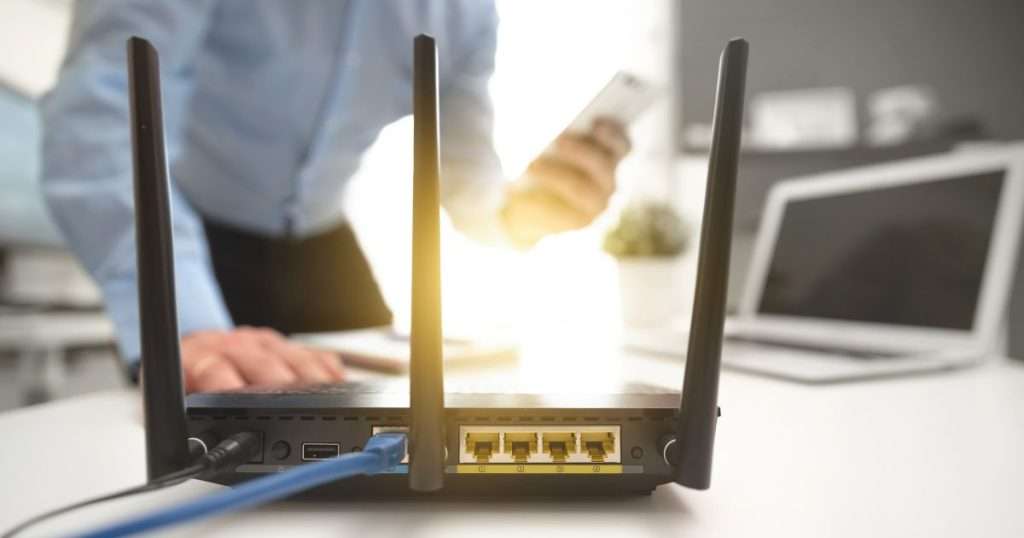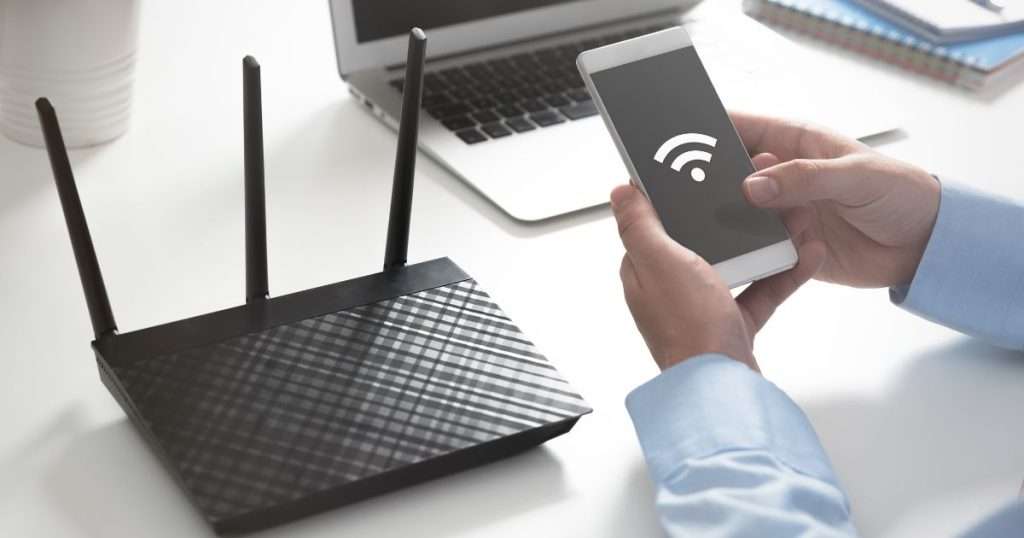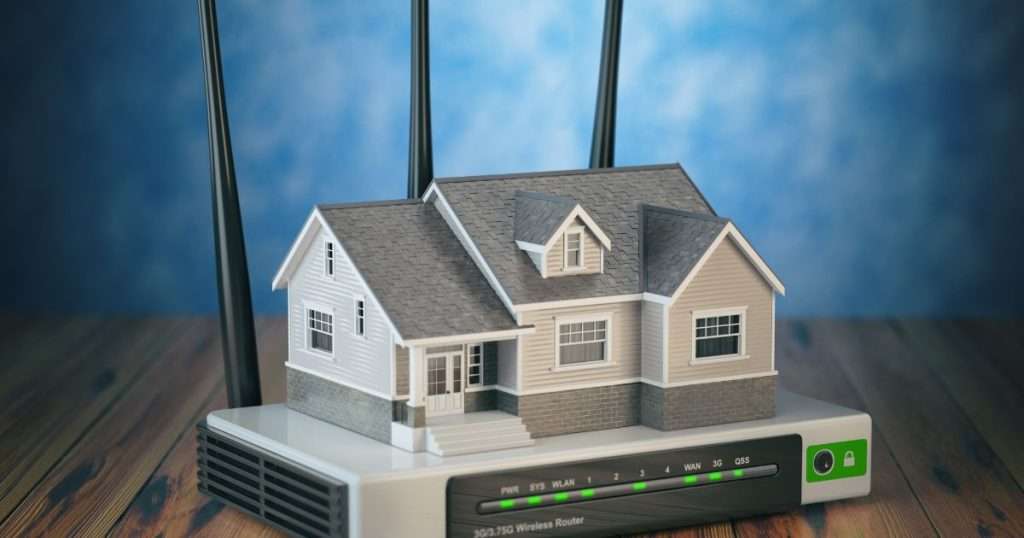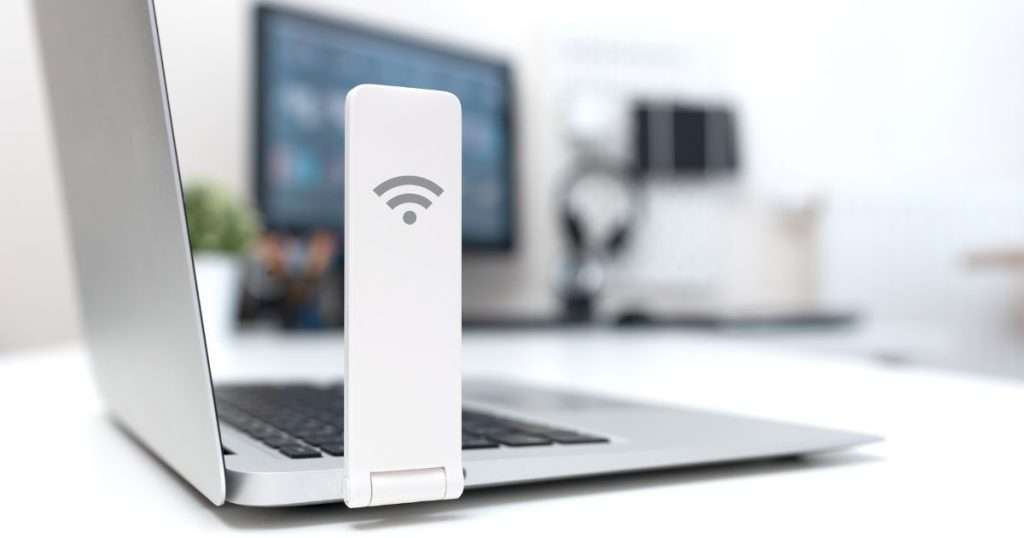Table of Contents
As we navigate the realities of remote work and stay-at-home orders, reliable access to a secure home Wi-Fi network is paramount. With more people working from home than ever, individuals must take proactive steps towards securing their internet connection and safeguarding sensitive data.
In this guide, we’ll explore effective strategies for protecting your home network against cyber threats and maintaining the highest level of online privacy while conducting remote work in 2023. From setting up secure passwords to utilising advanced encryption tools, this article offers comprehensive insights into fortifying your Wi-Fi network in today’s dynamic digital landscape.
Importance Of Securing A Home Wi-Fi Network For Remote Work

SECURE YOUR HOME WI-FI NETWORK FOR REMOTE WORK
Securing a home Wi-Fi network for remote work has become essential in the current times. With more people working from home than ever, preventing unauthorized access by third parties is crucial. Protecting sensitive information such as login credentials, banking details, or corporate data exchanged during remote work sessions is essential.
In addition, individuals must adopt advanced cybersecurity strategies to ensure a stable connection and resilience against cyber-attacks. A reliable Wi-Fi connection is vital for efficient remote work communication. By securing this channel, users can protect themselves against threats from online activities like hacking and phishing.
Secure Network Access

SECURE YOUR HOME WI-FI NETWORK FOR REMOTE WORK
One key component of securing a home Wi-Fi network for remote work is ensuring secure network access. This means setting up strong passwords and utilising advanced encryption to protect against unauthorised access and safeguard sensitive data. It’s recommended to use WPA2 or WPA3 encryption, which provides the highest level of security against attacks.
Another important step in securing network access is limiting who has access to your home Wi-Fi network. Avoid sharing your password with others, especially if they don’t need access for work-related purposes.
Additionally, consider creating guest networks with limited access privileges and separate them from your main network to further reduce the risk of an attack.
By implementing these strategies, you can significantly reduce the chances of cyber threats compromising your home Wi-Fi network while working remotely.
A. Change the Default Username and Password
Hackers can easily access your network if you don’t update these credentials, as many routers come with pre-set login information that can be found with a quick internet search. Changing your username and creating a strong password consisting of letters, numbers, and symbols make it much more difficult for cybercriminals to breach your network and steal sensitive data.
It’s crucial to emphasise the importance of regularly changing your username and password as an ongoing measure against potential threats. Cybercriminals constantly evolve their tactics for hacking into networks; therefore, regular updates minimise this risk by maintaining higher levels of complexity across all areas of authentication on the router.
Additionally, consider using two-factor authentication or biometric identification systems where possible as additional layers of security beyond just updating passwords or usernames. By staying vigilant and proactive about securing our online presence at home through simple but effective measures, we can prevent potential attacks on our prized bounties- personal data!
B. Turn on Wireless Network Encryption (WPA3 or WPA2).
To ensure the security of your home Wi-Fi network while working remotely, one key step you can take is to turn on wireless network encryption. This helps protect your internet connection from unauthorised access and keeps sensitive data secure. The two most widely used types of encryption are WPA3 and WPA2.
WPA3 is the latest version of the Wi-Fi Protected Access (WPA) protocol and offers advanced security enhancements such as individualised data encryption and protection against brute-force attacks. However, only some devices support it. In that case, WPA2 should be enabled with a strong password to prevent hackers from accessing your network or intercepting sensitive information.
Another critical aspect of protecting your home Wi-Fi network is ensuring that you’re using advanced encryption protocols such as WPA3 or AES. These authentication mechanisms help prevent eavesdropping by encrypting wireless communications between devices on the same network.
C. Use a VPN (Virtual Private Network) for secure connections.
A VPN or Virtual Private Network is one of the most effective strategies to safeguard your home Wi-Fi network. This technology creates a secure encrypted connection between your device and the internet, preventing cyber threats from intercepting sensitive data. With more people working remotely than ever, ensuring your online activity remains confidential is crucial.
Several factors are needed when selecting a VPN service. It includes:
- Speed
- Reliability
- Security features
In addition, look for providers with robust encryption protocols like Nordlayer or OpenVPN and avoid free services that may compromise your privacy by selling personal information or exhibiting poor performance.
Using a trusted VPN provider and other best practices can significantly reduce the risk of cyber-attacks on your home network.
These practices are as follows:
- Regularly changing passwords
- Keeping software up-to-date
Network Visibility and Protection

SECURE YOUR HOME WI-FI NETWORK FOR REMOTE WORK
Visibility into which devices are connected to your home network can aid in identifying potential vulnerabilities or suspicious activities that may indicate an ongoing security breach. In addition, properly configured firewalls, antivirus software, and intrusion detection systems also play significant roles in safeguarding against cyber attacks.
Additionally, regularly updating firmware and device settings strengthens the defence against newly discovered vulnerabilities. It also minimises risks associated with outdated technology configurations.
You can reduce the likelihood of successful attacks attempting to exploit gaps in protection protocols by
- Maintaining comprehensive visibility (what’s happening in your home)
- Network Implementing robust cybersecurity measures
A. Hide Your Network From View (SSID Broadcasting)
One effective strategy for securing your home Wi-Fi network is to hide it from view by disabling SSID broadcasting. This feature allows wireless networks to be visible to nearby devices and makes it easier for users to connect.
Still, it also advertises the presence of your network to potential attackers. By hiding your SSID, you’re making your network invisible and less likely to be targeted by hackers or intruders.
To disable SSID broadcasting, you’ll need access to your router’s settings page, which can typically be accessed through a web browser on a connected device. Once there, look for an option labelled “SSID broadcast” or “network name visibility” and turn that setting off.
Remember that this will make it harder for unauthorised parties to detect and identify your network. Those who already know the network’s name may still be able to connect if they have the password.
Additionally, hiding your Wi-Fi network from view through disabling SSID broadcasting is one important step towards enhancing the security of your home internet connection.
However, combine this with other protective measures for a comprehensive approach against cyber threats in 2023 remote work environments. Other protective measures include such as strong passwords and up-to-date encryption protocols.
B. Enable MAC Address Filtering
One effective strategy for securing your home Wi-Fi network is to enable MAC Address Filtering. This function allows you to create a list of approved devices that can access your network based on their unique Media Access Control (MAC) addresses. By restricting access only to authorised devices, you can prevent unauthorised users from connecting to your network, potentially compromising your security.
Enabling MAC Address Filtering involves accessing the settings on your router and adding the MAC addresses of all device(s) you want to grant access. Any device with an unrecognised or unapproved MAC address will be blocked from accessing the network entirely. It provides an added layer of protection against potential intruders or cyber-attacks.
Implementing a thorough security plan for your home Wi-Fi network ensures remote work productivity and data protection. Enabling MAC Address Filtering is one important step towards mitigating any potential risks or threats from uninvited guests attempting to gain control over your internet connection.
C. Disable Remote Administration
Disabling remote administration is one effective strategy for securing your home Wi-Fi network. Remote administration allows individuals to access your network from a remote location, which can open up potential security vulnerabilities. By disabling this feature, you limit access to only those physically connected to the network and improve overall cybersecurity.
To disable remote administration, log into your router’s settings and navigate to the “Remote Administration” section. Select “Disable” from there or uncheck any boxes allowing remote access.
It’s important to note that if you need remote access in the future, you’ll need to re-enable this feature and set up appropriate security measures such as strong passwords and two-factor authentication.
Disabling remote administration is a simple yet effective step towards securing your home Wi-Fi network against cyber threats while working remotely. Combined with other security measures like regular software updates and strong passwords, it can help safeguard sensitive data and maintain online privacy.
Router and Software Maintenance

SECURE YOUR HOME WI-FI NETWORK FOR REMOTE WORK
One crucial aspect of securing a home Wi-Fi network is properly maintaining the router and ensuring it’s running updated software. Outdated firmware or unpatched software can leave vulnerabilities in your network that hackers may exploit to access sensitive data or infect connected devices with malware. Therefore, it’s recommended to regularly check for router updates and upgrade the device’s firmware as soon as possible.
In addition, software maintenance plays an important role in securing a home Wi-Fi network. Keeping all devices on the network(computers, phones, and tablets) up-to-date with security patches can help prevent cyber attacks and keep your information safe.
Moreover, installing antivirus software on every device connected to the internet and frequently scanning for potential threats is essential. By implementing proper router and software maintenance practices, remote workers can better protect their work from cyber threats while working from home.
A. Keep Your Router Software up to Date
Keeping your router software up to date is vital in securing your home Wi-Fi network. Router manufacturers regularly release updates and patches to fix vulnerabilities that hackers could exploit.
However, failing to update your router software leaves it vulnerable to cyber threats, which may allow intruders access to sensitive data on your devices. Keeping tabs on the latest firmware updates for your specific router model is crucial in ensuring its security.
Some routers have automatic update features that you can enable, but you should double-check that these settings are configured appropriately and remain active. It’s also best practice to periodically check the manufacturer’s website for any security announcements or patches available.
Additionally, updating the software on your wireless router helps keep malicious actors at bay. Through remote working practices, it ensures optimal performance from technology devices using internet services within a household.
However, basing security efforts only upon an antivirus application isn’t enough today. Malware assailants consistently employ new tactics to find loopholes in our lives through different angles. Therefore, this year must exercise caution when going online- due diligence and practising exceptional cybersecurity hygiene measures will go a long way!
B. Upgrade and update all equipment and software regularly
Keeping your equipment and software up to date is essential in securing your home Wi-Fi network. Cyber threats are constantly evolving, and older versions of technology may have vulnerabilities that attackers can exploit. Regular updates will help patch these vulnerabilities and ensure your devices run with the latest security measures.
It’s not just computer software that needs updating. You should also keep other hardware, such as routers, up to date. It will enable them to operate more efficiently, provide better performance, and potentially include new features for advanced security.
By upgrading and updating all equipment and software regularly, you’re taking an important step towards protecting yourself from potential cyberattacks.
In addition, keeping on top of these updates ensures that off-site workers have a secure connection at home for their remote work activities without sacrificing speed or privacy concerns.
C. Upgrade to a modern operating system and keep it up to date.
One of the most crucial steps towards securing your home Wi-Fi network for remote work is to upgrade to a modern operating system and keep it up to date. Outdated software, especially an outdated operating system, can be vulnerable to cyber threats like viruses or malware that compromise network security.
Upgrading allows you access to the latest security patches and updates, which address any known vulnerabilities within the software.
Another benefit of upgrading your operating system is that newer versions often have built-in encryption features. It allows you to protect sensitive data stored on local devices in case they are lost or stolen.
In addition, enabling automatic software updates ensures that you stay protected against the latest cybersecurity threats without having to check for them regularly manually.
Ultimately, investing in a robust and updated operating system will give you peace of mind knowing that you have taken important steps towards safeguarding your online privacy.
Network Segmentation and Firewall

SECURE YOUR HOME WI-FI NETWORK FOR REMOTE WORK
Network segmentation and firewall are two important tools that can be used to secure your home Wi-Fi network.
Network segmentation involves dividing your network into smaller sections or segments. It limits the damage a hacker can do if they can access one area of your network. For example, you should have separate segments for work devices and personal devices or for guests who need internet access but shouldn’t be able to see shared files on your network.
Firewalls are a barrier between your network and the outside world by filtering incoming traffic and blocking any suspicious activity. Therefore, you should ensure an effective firewall for both inbound and outbound traffic. It is particularly if you use remote access software such as VPNs (Virtual Private Networks). It lets you securely connect with the company’s server from outside locations like public WiFi networks. In this way, firewalls prevent unauthorised access without compromising productivity while working remotely.
A. Implement wireless network segmentation.
To secure your home Wi-Fi network against potential cyber threats, it’s important to implement wireless network segmentation. This means dividing your wireless network into segments based on their security requirements. For instance, you can create a separate guest or IoT (Internet of Things) network with limited access to sensitive data and devices.
This technique helps limit the damage caused by intruders who manage to breach one segment of the network without being able to access other parts of the system. It also allows you to monitor and control each segment separately and apply customised security policies based on their specific needs.
Implementing wireless segmentation effectively enhances your home Wi-Fi security posture in today’s digital landscape. Following this updated guide’s recommendations, you can confidently work remotely, knowing your home Wi-Fi network is secure from unwanted intrusions.
B. Employ firewall capabilities
Securing your home Wi-Fi network is crucial in protecting yourself from cyber threats. One effective way to fortify your defences is by using firewall capabilities. It acts as a barrier between your internal network and outside connections.
By denying unauthorised access and blocking potential sources of harm, firewalls can help prevent malware infections, hacking attempts, and other types of cyberattacks. Many routers come with built-in firewall features that you can configure based on the level of protection you require.
However, you may also opt for third-party software or hardware firewalls to add an extra layer of security. When setting up your firewall rules, restrict incoming traffic not essential for remote work activities while allowing outgoing traffic necessary for good communication with clients or colleagues.
In summary, activating and configuring a firewall is an easy yet potent way to enhance the security of your home Wi-Fi network. It is required for remote work in 2023 against threatening hackers intending illegal data transactions through any possible online pathways. So prioritise it today!
C. Leverage security software
One of the essential measures to secure your home Wi-Fi network is by leveraging security software. Various types of security software are available in the market to protect against various cyber threats such as malware, viruses, ransomware and hacking attempts.
Some popular security software that you can use includes antivirus programs like Norton Security and McAfee Total Protection; firewalls like ZoneAlarm and Comodo Firewall; VPNs (Virtual Private Networks) like ExpressVPN and Surfshark VPN that offer secure remote access to your network; web filters like K9 Web Protection and Net Nanny that restrict access to inappropriate websites.
Leveraging these tools will help protect your sensitive data and give peace of mind while working remotely. Keep them updated with the latest versions for optimal performance so they stay relevant and secure.
Best Practices for Remote Work Security

SECURE YOUR HOME WI-FI NETWORK FOR REMOTE WORK
Best Practices for Remote Work Security are crucial to ensure the security of your home Wi-Fi network when working remotely. Start by enabling and changing a strong password regularly to protect your network. This will prevent unauthorised access and reduce the risk of hacking attacks.
Another essential practice is to keep all devices updated with the latest software patches and upgrades, as they often include security improvements that can safeguard against cyber threats. Additionally, consider using two-factor authentication to protect against phishing scams and other social engineering attacks.
Finally, use a reputable Virtual Private Network (VPN) service to encrypt your internet traffic when accessing sensitive information or resources outside your network. By incorporating these best practices into your remote work routine, you can substantially enhance your home Wi-Fi network’s security posture!
A. Protect passwords (strong and unique)
Protecting passwords is paramount to safeguarding your home Wi-Fi network against cyber attacks in 2023. Strong and unique passwords make it more challenging for hackers to crack, decreasing the risk of unauthorised access. In addition, it’s vital to use a mix of upper- and lower-case letters, numbers, and symbols and avoid using personal information such as names or birthdates.
Moreover, regularly changing your password can also enhance security by making it even harder for intruders to guess your credentials. If you have trouble remembering complex passwords or managing numerous accounts, consider using a password manager app that generates strong passwords automatically while saving them securely. Protecting passwords should be essential to securing any home Wi-Fi network in today’s digital era, where cybersecurity threats are rampant.
B. Safeguard against eavesdropping (physical and digital)
You can take a few measures to safeguard against physical and digital eavesdropping. Physically, ensure your wireless router is placed in a secure location that isn’t easily accessible to outsiders. If possible, keep it hidden away so that it’s not easily visible to prying eyes.
Additionally, consider turning off your router’s “broadcast SSID” feature on your router so your network doesn’t appear in Wi-Fi scans. To protect yourself digitally, ensure you’re using a strong encryption protocol for your network.
WPA2 or WPA3 (if available) are currently considered the most secure options and should be enabled on all devices connected to your network.
In addition, consider setting up a virtual private network (VPN) for added security when accessing sensitive information remotely. Overall, staying up-to-date with the latest security technologies and best practices for safeguarding your home Wi-Fi network from potential cyber-attacks is important as remote work continues to grow in popularity.
C. Exercise secure user habits (data backup and device disconnection)
One of the key steps towards securing your home Wi-Fi network for remote work is exercising certain user habits. This involves backing up important data regularly and disconnecting devices when they’re not in use to prevent unauthorised access.
By backing up data, you’ll be able to restore it if, by any chance, it gets lost, stolen or compromised due to a cyber-attack. Store your backup files on an external hard drive or cloud storage service instead of using physical media like CDs and DVDs.
Another measure you can take is disconnecting devices from the network when not in use. It means shutting down both wired and wireless connections on all non-active computers, phones, tablets and any other internet-enabled device. Doing so will minimise the risk of intruders accessing your personal information through interconnected devices on your network.
In addition, always make sure that sensitive information such as passwords, financial records, and personal documents are stored securely with strong encryption, even when backed up elsewhere. Adopting safe user habits is essential in ensuring maximum protection against potential cyber threats during remote work sessions over Wi-Fi networks at home or elsewhere.
D. Ensure confidentiality during telework.
Ensuring confidentiality during telework is critical in maintaining security and protecting sensitive information. It can be achieved using a virtual private network (VPN) that encrypts all data transmitted over the network, making it unreadable to anyone who intercepts it. It’s also essential to use strong passwords that are difficult to guess and enable two-factor authentication wherever possible.
Additionally, employees should be periodically reminded about adhering to company guidelines on information sharing and cautioned against leaving electronic devices unattended or accessible to unauthorized persons.
Employers may also consider restricting access privileges for certain files or software programs to select individuals within the organisation. Ensuring strict adherence to these measures will boost cybersecurity and foster trust among colleagues in remote work arrangements, given their confidence in its safety protocols.
Conclusion

SECURE YOUR HOME WI-FI NETWORK FOR REMOTE WORK
The key security measures for securing your home Wi-Fi network against cyber threats include network visibility and protection, router and software maintenance, and network segmentation with a firewall. These steps are crucial today, where remote work has increased the risk of cyber attacks on poorly secured networks.
By implementing these measures, you’ll have greater control over who can access your network while ensuring that all devices connected remain secure from malicious hackers. Furthermore, regularly maintaining your router’s firmware updates is essential to patch any known vulnerabilities quickly.
Securing your home Wi-Fi network requires constant vigilance in keeping up-to-date with the latest cybersecurity solutions. By following the guidelines outlined in this updated guide 2023 and implementing them accordingly, you’ll help safeguard yourself against cyber threats while working remotely using Wi-Fi internet services.
